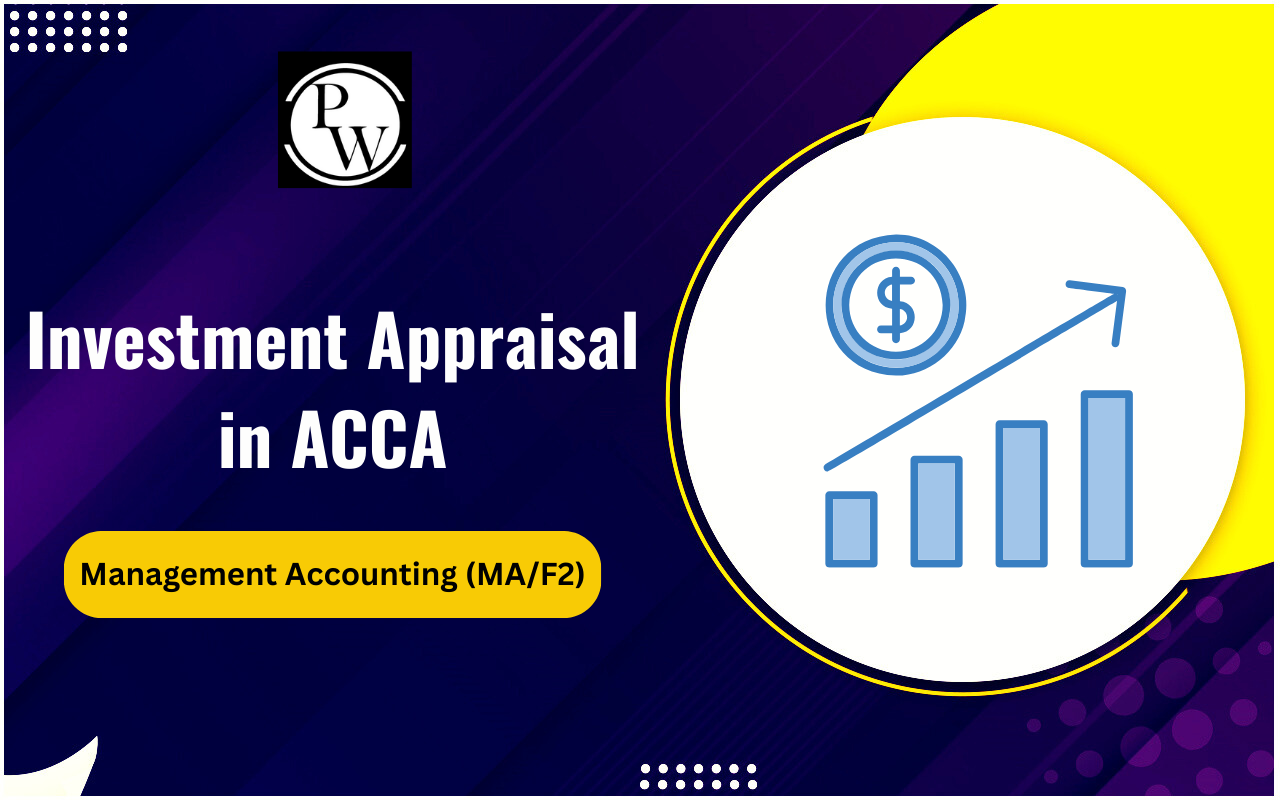
Portfolio Management: The finance realm is ever-changing, and as Chartered Accountants (CAs), you hold a crucial position in overseeing and offering guidance on financial portfolios. Succeeding in the CA Final examination in India necessitates a profound comprehension of portfolio management, encompassing advanced strategies to excel in this domain.
This article will examine the basics of portfolio management and investigate sophisticated methods to augment your expertise, equipping you for triumph in your CA Final examination.The Basics of Portfolio Management
It's essential to build a solid grasp of the basics of portfolio management before exploring more advanced techniques.Definition and Principle
Portfolio management encompasses the creation and supervision of a diversified investment portfolio that aligns with the investor's financial goals. It revolves around finding the appropriate equilibrium between risk and return. In greater depth, portfolio management involves the process of choosing a combination of assets (including stocks, bonds, real estate, and alternative investments) and overseeing them to maximize gains while considering the investor's risk tolerance and financial objectives. The objective is to strike a harmony between safeguarding capital and producing returns.Portfolio Objectives and Goals
Understanding the client's goals is the first step in portfolio management. Whether it's wealth preservation, capital appreciation, or income generation, your portfolio should be tailored to meet these objectives. Wealth preservation strategies prioritize the safety of the invested capital and focus on minimizing risk. This approach is suitable for investors with a low risk tolerance who want to protect their principal amount. Capital appreciation strategies aim to generate substantial returns by taking on more risk. Investors pursuing capital appreciation are typically willing to accept higher volatility in the hope of achieving significant gains. Income generation strategies prioritize regular income streams from the portfolio. This is common among retirees or individuals seeking steady cash flow from their investments.Risk and Return Relationship
Risk and return are inseparable in portfolio management. Generally, higher returns come with higher risks, but a well-structured portfolio aims to optimize this risk-return trade-off. Risk in portfolio management can be categorized into two types:- Systematic risk: This is also known as market risk and is associated with factors that affect the entire market, such as economic conditions, interest rates, and political events. Systematic risk cannot be eliminated through diversification.
- Unsystematic risk : Also known as specific risk, this pertains to individual assets or industries and can be mitigated through diversification. Illustrative instances encompass company-specific developments, industry-specific shifts, and alterations in management.
Asset Classes and Their Characteristics
Diversifying among different asset categories, including stocks, bonds, real estate, and commodities, is crucial. Each of these asset classes possesses unique risk and reward attributes that necessitate thoughtful contemplation when constructing a portfolio.- Equities: Equities symbolize ownership in a corporation and present the opportunity for substantial gains, albeit accompanied by increased price fluctuation.
- Bonds: Bonds represent a form of debt instrument utilized by governments or corporations to raise capital from investors. In exchange, investors receive periodic interest payments. Bonds are typically considered less risky than stocks but offer relatively lower potential for profits.
- Real Estate: Real estate investments involve acquiring properties or investing in real estate investment trusts (REITs), which can generate rental income and the possibility of property value appreciation.
- Commodities: Commodities are tangible items such as gold, oil, and agricultural items. They can act as a safeguard against inflation but are susceptible to changes in worth influenced by alterations in supply and demand dynamics.
Modern Portfolio Theory (MPT)
One of the cornerstones of advanced portfolio management is the Modern Portfolio Theory (MPT).Introduction to MPT
Created by Harry Markowitz in the 1950s, Modern Portfolio Theory (MPT) stands as a core principle highlighting the importance of diversification. It contends that by allocating investments across a combination of assets with uncorrelated performance, you can diminish the overall risk of your portfolio without compromising potential returns. In a more extensive explanation, Modern Portfolio Theory (MPT) is founded on the principle of efficiency. An efficient portfolio is characterized by its ability to yield the greatest anticipated return within a specific risk level or, conversely, to exhibit the lowest risk for a given expected return. MPT considers both the anticipated returns of assets and their variances, which serves as a gauge of their riskiness, in order to ascertain the most advantageous portfolio.Efficient Frontier and Optimal Portfolio Selection
The efficient frontier is a graph that illustrates the optimal portfolio combinations that maximize returns for a given level of risk or minimize risk for a given level of return. To construct the efficient frontier:- Calculate the expected returns and variances of different asset combinations.
- Plot these combinations on a graph with risk (variance) on the x-axis and expected return on the y-axis.
- Connect the points that represent efficient portfolios to form the efficient frontier.
Capital Market Line (CML) and Security Market Line (SML)
The CML and SML help determine the appropriate risk-adjusted return for a portfolio. These lines serve as benchmarks to assess whether an investment's return justifies its risk. The Capital Market Line (CML) offers a graphical depiction of the equilibrium between risk and potential rewards within a portfolio containing safe investments like Treasury bonds and more high-risk choices like stocks. The CML demonstrates that through the combination of a risk-free investment and a diversified array of riskier assets, investors can construct portfolios featuring different degrees of risk and potential profit. The Security Market Line (SML) is a similar concept but focuses on individual assets or securities. It helps investors determine whether a particular security is appropriately priced based on its risk (beta) and the risk-free rate. Understanding the principles of MPT, efficient frontiers, and these lines is fundamental for optimizing portfolios and assessing investment opportunities.Asset Allocation Strategies
Asset allocation is a critical component of portfolio management, and mastering advanced strategies in this area is essential for Chartered Accountants preparing for the CA Final exam.Strategic Asset Allocation vs. Tactical Asset Allocation
In a detailed examination, we can distinguish between strategic asset allocation and tactical asset allocation: Strategic Asset Allocation involves setting a long-term target allocation for each asset class and periodically rebalancing the portfolio to maintain that allocation. This approach is guided by the client's investment objectives and risk tolerance. For example, if the strategic allocation is 60% stocks and 40% bonds, you would periodically adjust the portfolio to maintain this ratio. Tactical Asset Allocation, conversely, entails making short-term adjustments to the distribution of assets in response to evolving market conditions or economic predictions. This strategy aims to capitalize on immediate opportunities or mitigate potential risks. For example, if you are concerned that stocks are currently overvalued and susceptible to a market downturn, you may temporarily reduce your stock holdings and allocate more to safer options like bonds.Building a Diversified Portfolio
Diversification is a cornerstone of portfolio management, and its finer points are crucial for CAs: Diversification entails spreading investments across various asset categories, industries, and global regions to mitigate risk. In a diversified portfolio, the underperformance of one asset or sector is counterbalanced by the superior performance of others. For example, during a stock market downturn, bonds may provide stability. Conversely, during a bull market for stocks, equities may outperform other asset classes. Effective diversification requires a thorough understanding of the correlations between different assets. Assets with low or negative correlations provide better diversification benefits. CAs need to analyze historical data and economic factors to make informed decisions about asset allocation and diversification.Risk Assessment and Risk Tolerance
Risk assessment is a crucial component of asset allocation, encompassing the following elements:- Identification of Risk: Recognizing potential threats capable of impacting the portfolio, encompassing market-related perils, interest rate fluctuations, credit-related hazards, and liquidity-related vulnerabilities.
- Risk Measurement: Quantifying these risks using appropriate tools and metrics. For example, calculating the standard deviation of historical returns can measure market risk.
- Risk Tolerance Assessment: Understanding the client's risk tolerance, which is their ability and willingness to bear risk. Risk tolerance depends on factors such as age, financial goals, and investment experience.
Portfolio Optimization Techniques
Optimizing a portfolio involves selecting the right combination of assets to achieve the desired risk-return profile. Advanced techniques in portfolio optimization are crucial for achieving optimal results.Markowitz Portfolio Optimization Model
The Markowitz Portfolio Optimization Model, developed by Harry Markowitz, is a foundational technique in portfolio management. In-depth understanding involves:- Expected Return: Calculating the expected returns of various assets in the portfolio.
- Risk Measurement: Measuring the risk of each asset, typically through standard deviation, which quantifies the asset's historical volatility.
- Covariance and Correlation: Evaluating the covariance and correlation between asset pairs. Covariance measures how two assets move together, while correlation measures the strength and direction of their relationship.
- Efficient Frontier: Plotting different asset combinations on the risk-return spectrum to identify the optimal portfolios that provide the highest return for a given level of risk or the lowest risk for a given level of return.
Black-Litterman Model
The Black-Litterman Model is a more advanced approach to portfolio optimization:- Expected Returns: It combines subjective expectations with historical data to estimate expected returns for assets. Investors and analysts can express their views on different assets, and the model incorporates these views into the expected return calculations.
- Uncertainty and Confidence Levels: The model allows users to assign uncertainty levels to their views. This helps account for the uncertainty associated with subjective expectations.
- Asset Allocation: The model then optimizes the asset allocation based on the expected returns, uncertainty, and the investor's risk tolerance.
Monte Carlo Simulation
Monte Carlo Simulation is a potent technique for modeling the potential outcomes of a portfolio. Here's a closer examination:- Random Sampling: Monte Carlo simulations employ random sampling to generate thousands or even millions of potential future scenarios for asset returns.
- Probability Distribution: These simulations assist in constructing a probability distribution of portfolio returns. This distribution offers insights into the array of possible results and empowers investors to make more informed choices.
- Risk Assessment: By simulating diverse market conditions, investors can evaluate how their portfolios might fare under varying economic and financial circumstances.
- Sensitivity Analysis: Monte Carlo simulations can also conduct sensitivity analyses, aiding in the identification of the factors that exert the most substantial influence on portfolio outcomes.
- Decision Support: Investors and portfolio managers can use Monte Carlo simulations to make more robust investment decisions, considering the inherent uncertainty in financial markets.
Risk Management in Portfolio
Portfolio management relies significantly on proficient risk management, a vital element. In this segment, we will explore comprehending different categories of risk, techniques for gauging risk, tactics for managing portfolio risk, and how Chartered Accountants (CAs) can address these hurdles.Types of Risk: Systematic and Unsystematic
Risk in portfolio management refers to the possibility of experiencing unfavorable outcomes or losses. There are two primary types of risk:-
Systematic Risk (Market Risk):
This risk is also known as market risk and is associated with factors that affect the entire market or economy. Systematic risk cannot be eliminated through diversification because it's inherent in the broader economic environment. Examples of systematic risks include:
- Economic Factors: Such as economic recessions, inflation, or deflation.
- Interest Rate Risk: Fluctuations in interest rates can affect bond prices and stock valuations.
- Political Events: Events like elections, trade disputes, or government policy changes can impact markets.
- Natural Disasters: Events like earthquakes, hurricanes, or pandemics can disrupt economies and financial markets.
-
Unsystematic Risk (Specific Risk):
This risk is specific to individual assets, industries, or companies. Unsystematic risk can be reduced or eliminated through diversification because it's not related to broader market factors. Examples of unsystematic risks include:
- Company-Specific Risk: Such as poor management decisions or financial troubles within a company.
- Industry Risk: Changes in an industry's outlook or regulations can affect all companies within that industry.
- Liquidity Risk: The risk that a particular asset cannot be quickly sold without a substantial loss.
- Credit Risk: The risk of a bond issuer defaulting on interest or principal payments.
Risk Measurement Techniques
Risk measurement involves quantifying the various types of risk in a portfolio. Several techniques are commonly used in portfolio management:- Standard Deviation: This statistical measure quantifies the historical volatility of an asset's returns. Higher standard deviation indicates greater price volatility and risk.
- Beta : Beta measures the sensitivity of an asset's returns to changes in the overall market (usually represented by an index like the S&P 500). A beta of 1 means the asset moves in line with the market, while a beta greater than 1 indicates higher volatility.
- Value at Risk (VaR): VaR calculates the highest potential loss within a portfolio with a defined level of confidence over a specified time period. For instance, a 95% VaR of $100,000 signifies a 5% probability of experiencing losses exceeding $100,000 during the chosen timeframe.
- Covariance and Correlation: These metrics evaluate how assets in a portfolio behave in relation to each other. A low correlation suggests that assets are less prone to moving in tandem, thereby diminishing the overall risk of the portfolio.
- Sharpe Ratio: The Sharpe Ratio evaluates the risk-adjusted performance of a portfolio by measuring the excess return (return above the risk-free rate) per unit of risk (standard deviation).
- Treynor Ratio: Similar to the Sharpe Ratio, the Treynor Ratio assesses risk-adjusted performance but uses beta as the measure of risk instead of standard deviation.
Advanced Techniques in Portfolio Management for CA Final FAQs
How do Monte Carlo simulations aid in risk assessment for portfolio management?
Monte Carlo simulations model potential market scenarios, helping assess risk by generating a range of outcomes.
What is the Black-Litterman Model, and why is it relevant for CAs in portfolio management?
The Black-Litterman Model incorporates subjective views into asset allocation, making it valuable when expert opinions or market views impact decisions.
Can you provide examples of tax-efficient portfolio planning strategies and their impact on tax liabilities?
Strategies like tax-loss harvesting and tax-efficient asset selection reduce tax liabilities by offsetting gains and selecting tax-favored assets.
How do Chartered Accountants identify the primary driver of portfolio performance in attribution analysis?
Comparing portfolio returns to a benchmark reveals whether asset allocation, security selection, or market timing drove performance.
What is the role of SEBI regulations and ICAI code of conduct in the daily activities of CAs in portfolio management?
Compliance with SEBI regulations and the ICAI code ensures professionalism, ethics, and investor protection, integral to daily portfolio management activities.
Talk to a counsellorHave doubts? Our support team will be happy to assist you!

Check out these Related Articles
Free Learning Resources
PW Books
Notes (Class 10-12)
PW Study Materials
Notes (Class 6-9)
Ncert Solutions
Govt Exams
Class 6th to 12th Online Courses
Govt Job Exams Courses
UPSC Coaching
Defence Exam Coaching
Gate Exam Coaching
Other Exams
Know about Physics Wallah
Physics Wallah is an Indian edtech platform that provides accessible & comprehensive learning experiences to students from Class 6th to postgraduate level. We also provide extensive NCERT solutions, sample paper, NEET, JEE Mains, BITSAT previous year papers & more such resources to students. Physics Wallah also caters to over 3.5 million registered students and over 78 lakh+ Youtube subscribers with 4.8 rating on its app.
We Stand Out because
We provide students with intensive courses with India’s qualified & experienced faculties & mentors. PW strives to make the learning experience comprehensive and accessible for students of all sections of society. We believe in empowering every single student who couldn't dream of a good career in engineering and medical field earlier.
Our Key Focus Areas
Physics Wallah's main focus is to make the learning experience as economical as possible for all students. With our affordable courses like Lakshya, Udaan and Arjuna and many others, we have been able to provide a platform for lakhs of aspirants. From providing Chemistry, Maths, Physics formula to giving e-books of eminent authors like RD Sharma, RS Aggarwal and Lakhmir Singh, PW focuses on every single student's need for preparation.
What Makes Us Different
Physics Wallah strives to develop a comprehensive pedagogical structure for students, where they get a state-of-the-art learning experience with study material and resources. Apart from catering students preparing for JEE Mains and NEET, PW also provides study material for each state board like Uttar Pradesh, Bihar, and others
Copyright © 2025 Physicswallah Limited All rights reserved.
Get App







